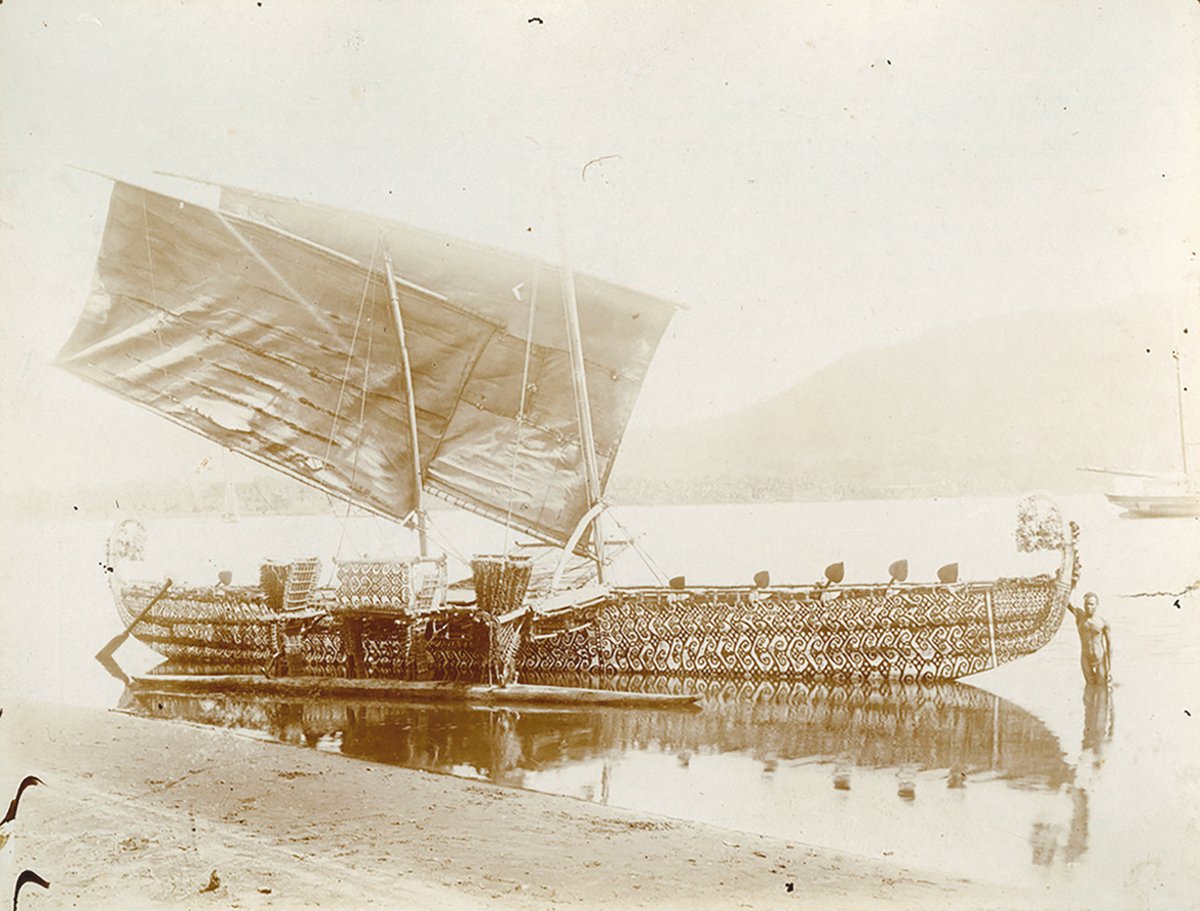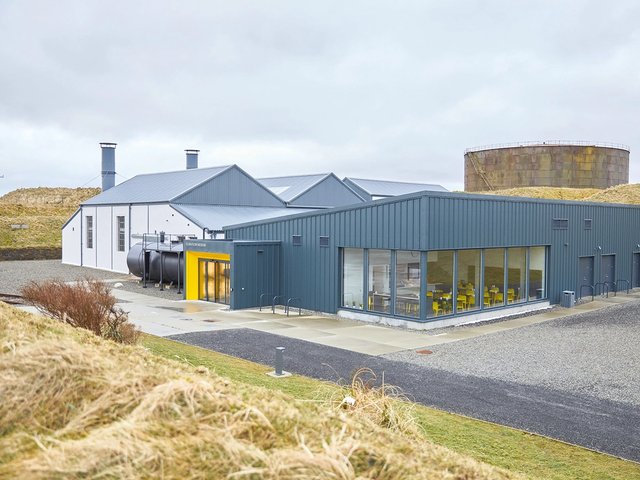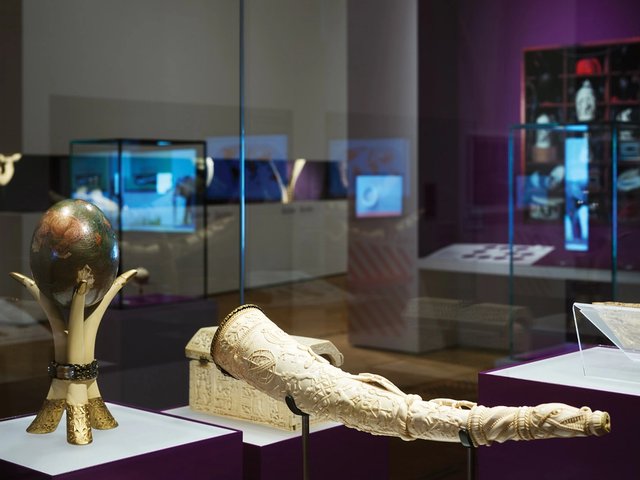The magnificent boat in Götz Aly’s short, disturbing book (first published in German in May 2021) is a richly decorated 50ft outrigger sailing canoe made on Luf Island, part of the Hermit Islands in the Bismarck Archipelago, off the north-west corner of what was then German New Guinea (now part of Papua New Guinea). In 1882, German colonisers burned houses, boats and trees, and turned the island into a coconut plantation. In 1890, the newly built boat was shipped to Germany, where it ended up in the Berlin Ethnological Museum.
In 2018, the painted vessel with decorative carvings was lowered into the central hall of the new Humboldt Forum, the museum for non-Western art in Berlin. As we follow the vessel’s journey there, we learn how its acquisition helped destroy a local South Sea culture and most of that culture’s treasured objects. Aly says his subject is “the ruthlessness, ignorance, fear and greed of the German colonists in the South Seas”, a field up to now eclipsed by German colonial crimes in Africa.
Looting in the South Seas
Aly’s detailed account follows German ships as they arrive at Luf Island to punish the local population for an earlier fight with Germans, burning homes and forests, stealing food and clearing land for the coconut plantations where the remaining islanders were enslaved. What was not destroyed was plundered. The German attackers stole whatever objects they wanted.
A respected German historian of the Nazi era and European anti-semitism, Aly is in new territory here. He draws widely from official documents and accounts where Germans wrote openly about violence in the South Seas. He also had inside information. His great grand-uncle was a German pastor with the navy.
The mission throughout German New Guinea was clear. The naval vessels ensured safe conditions for trade and agriculture. “This situation follows a truism in European colonial history,” Aly writes. “The flag follows trade.” The consensus among Germans was that these actions would eventually wipe out the native population of “nature peoples” who lacked a written language and a sense of their own history. Sometimes Germans paid for local carved objects in beads, tobacco and mirrors that cost a few cents. A special term, “anonymous purchase”, referred to small items that Germans left behind when local people had fled the naval patrols that carried off plunder from settlements.
The German museums that hoped to receive them were convinced that colonisation would eventually eradicate the populations that produced those works. Therefore, Aly writes, the pressure to collect was great. Clearly, if trade was at one end of the looting chain, German museums were at the other. Officials vied among themselves to amass South Sea collections, most of which were eventually sold to museums that competed for objects and body parts.
Crucial in this process was the role of the emerging discipline of ethnology. Among the important German collectors of South Sea objects were ships’ physicians, many of whom moved to the new profession. That field, active at universities and museums in the late 19th and early 20th centuries in Germany, raised demand for works by “nature peoples”. At this time a common ethnological theory held that local colonised populations were dying off, not due to disease and the destruction of their livelihood, but because they willed their own extinction.
More reason to ship the Luf Boat to Germany, Aly writes. In a painstaking description, quoted from the writings of Felix von Luschau, the Berlin curator who acquired the boat (and Benin bronzes), we learn of the vessel’s beauty, and its design—simple yet refined, without a single nail, which enabled ocean travel of long distances with and against the wind. Germans targeted all native boats in regular punitive expeditions meant to destroy local economies. The Luf Boat is the last existing vessel of its kind.
While the boat is still displayed prominently, the museum website notes gaps in its provenance and cites contacts with Papua New Guinea. Autre temps, autre moeurs? “The men who ran German museums knew all too well about the atrocities that were going on,” says Aly, who cites an account of a local man’s head being severed and wrapped up for transport to Germany right after his execution.
His book ends with a courteously officious response letter from GLOBAL. Human Arts. Heritage, an imagined encyclopedic museum in Port Moresby, New Guinea, to an imagined German claim on the Western war loot there. The object is the world’s only surviving sculpture by Tilman Riemenschneider, and the museum’s answer is “no, but come visit.” The parody lightens a grim tale.
• Götz Aly, translated by Jefferson Chase, The Magnificent Boat: The Colonial Theft of a South Seas Cultural Treasure, Belknap/Harvard University Press, 224pp, 36 illustrations, US/UK $29.95/£29.95/€27.95 (hb), published 31 March
• David D’Arcy is a correspondent for The Art Newspaper in New York





